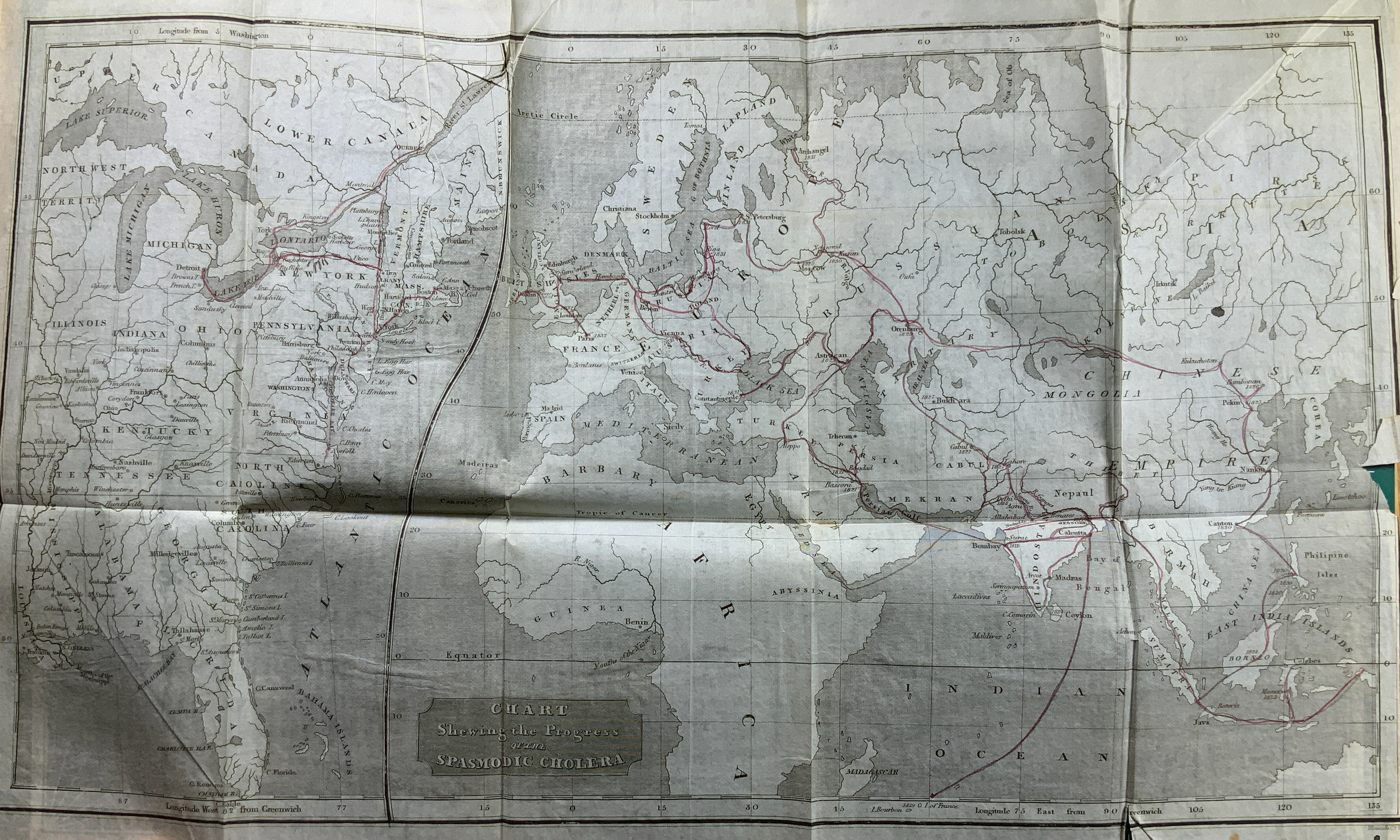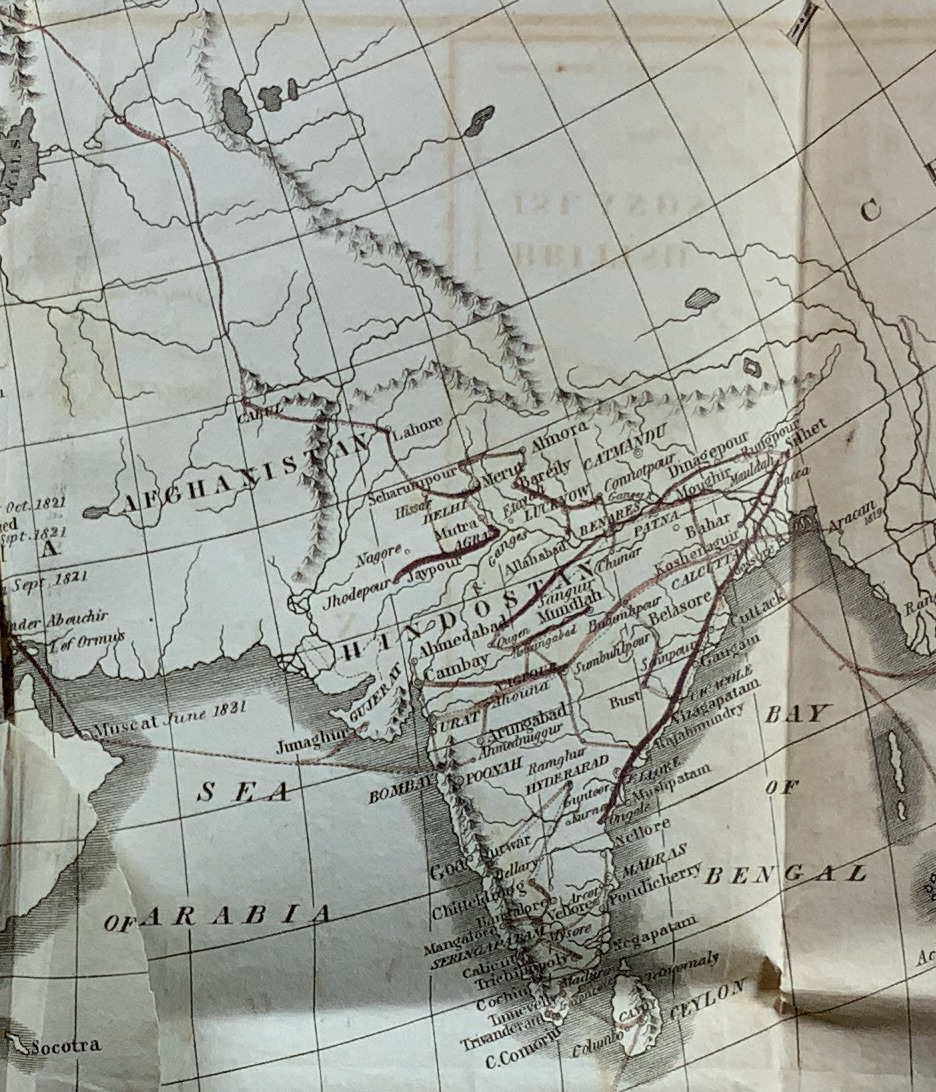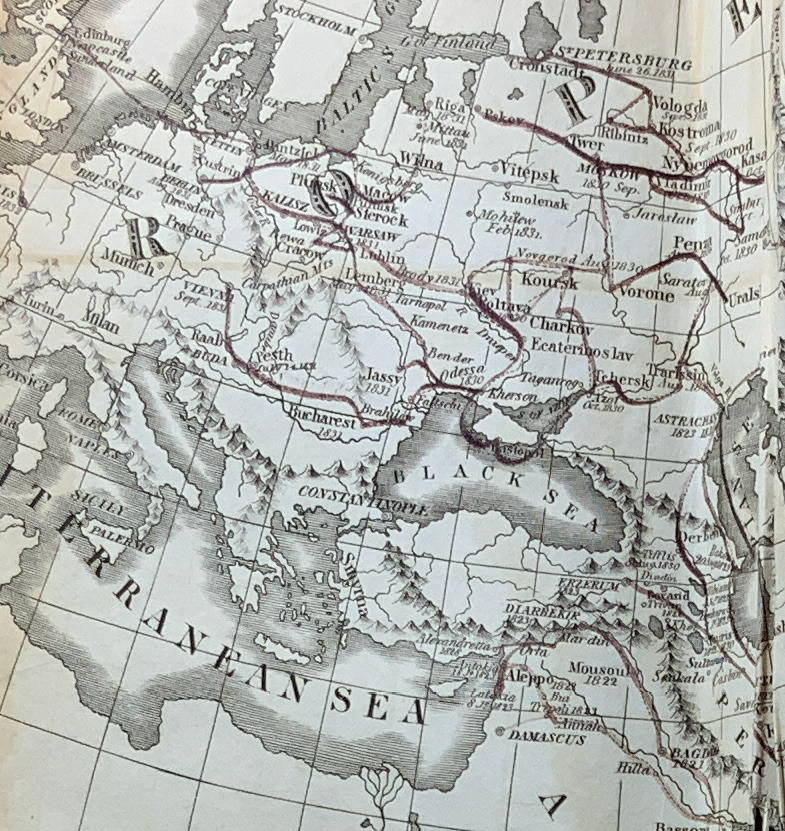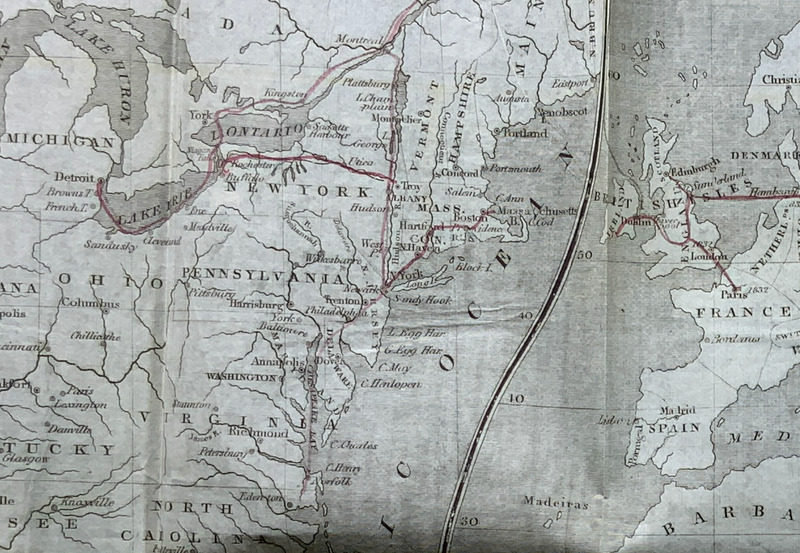Cholera Cartographies: Pandemic Routes and Vectors
“There seems to be no doubt that this dreadful disease has at length reached this part of the world & we may expect it to sweep our own land… we should each be prepared for its visitation.”
Benjamin Hale, in a letter to his father on the arrival of cholera in North America. (June 18, 1832)
In late June 1832, Benjamin Hale wrote to his father with news of the ill-fated passage of some “40 or 50 persons” who had arrived by ship at Quebec. Since its arrival, the disease which had struck those passengers was rumored to have travelled to the extreme southern part of Lake Champlain, in present-day Vermont. His prophetic words at the conclusion of that letter (featured above), hint at the months of devastation to follow in cholera's path.
Following the timeline put forth by contemporary scholars, this event may be considered epidemic cholera’s first visit to North America. In Hale’s letter we bear witness to the beginning of an era wherein the residents of cities—especially the urban poor, the ill-clothed, and the ill-housed—were ravaged by scourge. However, we would be remiss to overlook the thousands upon thousands that had succumbed to the disease before Hale’s had witnessed its crossing into the United States.
The story of Cholera begins in a time before maps, charts, or cartography. In his Treatise on Epidemic Cholera, A. Brigham alludes to numerous historical plagues—one killing 70,000 in Israel in the tenth century BCE, a “universal and destructive plague” in sixth century Athens, an outbreak at the time of English settlement in North America—all with symptoms characteristic of cholera, prior to the disease’s first official incidence in the 19th century.
Many historical sources map the origin of later outbreaks at the Ganges River Delta in 1817. In A Practical Treatise, Drake reported that Asiatic Epidemic Cholera began in Jessore (or possibly Nudecca, three months earlier) and persisted for another decade on and around the Indian subcontinent. Around 1829, it was said to have crossed the Ural mountains and reached Orenburg; it hesitated here for about a year before travelling to Moscow.
At a glance, it is crucial to note that geography directed and dulled the spread of epidemic cholera. While “all over Asia it [had] prevailed on the margins of rivers, near their mouths, and in other damp and vaporous localities'' (Drake), major land features (mountains, oceans) prevented it from infecting diverse populations. In an episode of The Anthropocene Reviewed, author John Green notes that cholera’s spread coincided with increased migration of larger human populations across the continent.
Besides waterways and water supplies, today infamous in the narrative of cholera’s spread, humans themselves acted as vectors for the spread of the disease. Like some modern illnesses, cholera could present asymptomatically, meaning that infected persons could transmit the disease without knowing they had been infected.
Once cholera eventually reached St. Petersburg in early 1831, the obstacles dissipated for the disease’s transmission. In the span of one year, having before spent twelve years in “India, Persia, and Syria” (Drake), cholera moved to Hungary, Poland, Austria, and Hamburg, and then back into Asia Minor. By 1831, it had arrived in England.
At this point, “[reports] began filtering over the Atlantic: over fifty thousand dead in Britain, twice that many in France, [and] countless more in Russia” (Jortner).
And at the time of his writing in early June of 1832, Drake reported that cholera had laid claim to Glasgow, London, and Paris.
On June 9th, it had reached Quebec; on June 11 or 12th, it was racing through Montreal.
And less than a week later, on 18 June, Hale would deliver the news that the disease had finally secured passage into the United States of America.
“[The disease] would democratically claim the lives of city-dwellers in New York City, Philadelphia, and Brooklyn, among many others. By 1833, the outbreak would dissolve as quickly as it had arrived, not to be seen for another two decades” (Jortner).
The second cholera pandemic represents one of the first historical moments in which epidemiologists started to map, track, and understand the spread of disease throughout populations. Though they were hazy to the root cause of its spread (as aforementioned in Causes in Consequences), they understood that disease transmission followed valuable patterns that could inform domestic and international policy.



